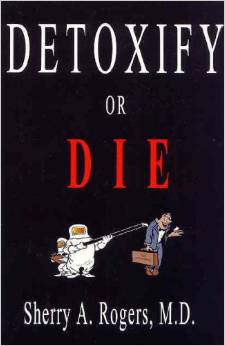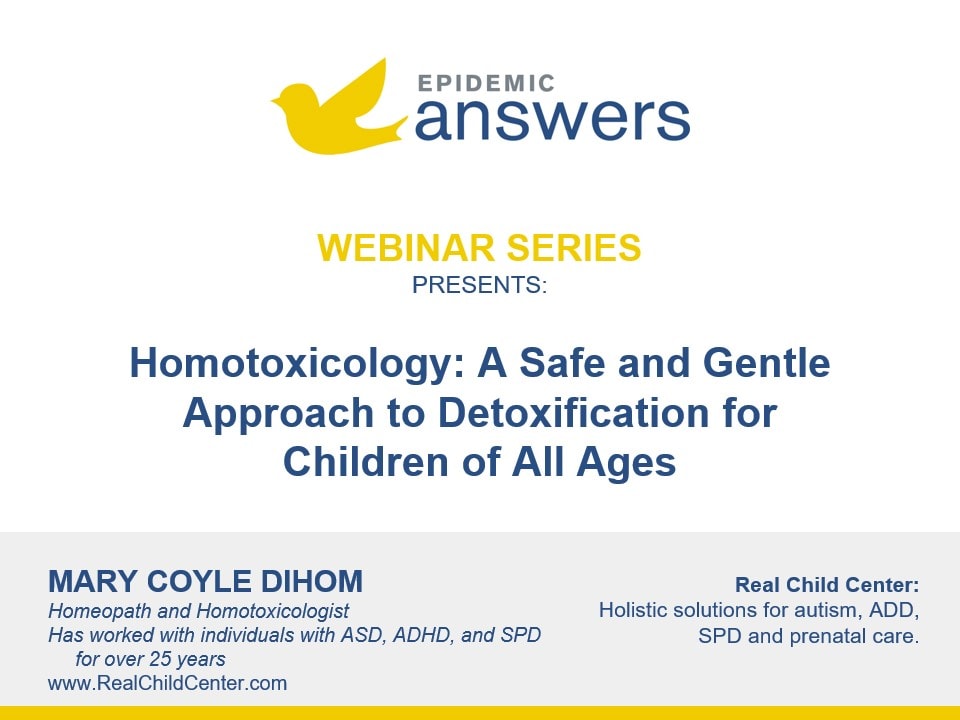This information comes from Children with Starving Brains, second edition, by Jaquelyn McCandless, MD, and we thank her for her valuable contributions. Kelly Dorfman helped with clarification.
Here are some exciting new choices for detoxification for children, which are presently being used by practitioners concerned about methylation issues. Please work with a nutritionist or medical professional to integrate them into a whole treatment plan, rather than using them as “treatments du jour.”
Vitamin B12 Injections
Chronic gut inflammation, toxicity, and vegetarian diets can be factors in low levels of vitamin B12. Dr. James Neubrander in Edison, NJ recommends injections of concentrated vitamin B12 in the form of pure methlycobalamin, instead of oral B12, to children with developmental delays. Injections bypass the impaired gut and directly feed the nervous system.
Who Is a Candidate?
Developmentally delayed children with a history of thimerosal, autistic enterocolitis and chronic loose stools. Others have lab values showing anemia, positive myelin basic protein (MBP) antibodies and/or elevated methylmalonate (MMA) on the urinary organic acid test.
What Does It Do?
Vitamin B12 is tricky to absorb from food, and requires an “usher” molecule in the stomach to lead it to the same part of the small intestine where lymphoid hyperplasia may be found. Together with folate, B12 participates in the complicated detoxification process by facilitating methylation processes important for creating optimum metabolic balance. Then, the body can eventually detoxify itself.
Transdermal Thiamine Tetrahydrofurfuryl Disulfide (TTFD)
TTFD is a synthetic version of allithaimine, a naturally occurring substance found in garlic. Dr. Derrick Lonsdale believes that TTFD has three sulfur-related mechanisms that benefit children with autism spectrum disorders (see below).
Who Is a Candidate?
Some children experience a proliferation of “gut-bugs” and yeast as a result of chelation treatments. When gut ecology becomes imbalanced, stop chelation immediately and add necessary nutrients, probiotics, digestive enzymes and dietary restrictions to correct the problem and heal the leaky gut. In some children, TTFD appears to alleviate the negative side effects of yeast die-off.
What Does It Do?
TTFD allegedly enhances sulfur’s energy metabolism in the central nervous system, functions as a chelating agent, and alleviates intracellular thiamine deficiency. Dr. Lonsdale cautions practitioners to assure that B6, magnesium, vitamin C and taurine are in place before starting TTFD, because TTFD requires a balanced nutritional environment for optimal functioning. TTFD is a prescription item that you can get at a compounding pharmacy.
Transdermal or Intravenous Glutathione (GSH)
Glutathione protects the body against toxic agents, such as heavy metals. It is made in the body from the three amino acids, systeine, glycine and glutamine. The level of glutathione (GSH) in the body determines how much toxin is absorbed.
If the glutathione levels are low, the body accepts more heavy metals. As glutathione levels rise, the body is better able to excrete poisons. Adequate levels of glutathione are also needed for many aspects of immune function. Low levels impair immune system function, which leads to frequent infection.
The body’s poor response to infection causes inflammation and oxidative stress, which, in turn, lowers glutathione. A vicious cycle perpetuates when there is inadequate glutathione to offset oxidative stress, further reducing immunity, and allowing opportunistic infections (like yeasts and parasites) to proliferate.
Who Is a Candidate?
Children with suspected heavy metal exposure. Some children with colitis also have impaired GSH function. Bill Walsh found that children with atypical Cu/Zn ratios and thus metallothionein (MT) errors, have inappropriate glutathione.
Children may have MT errors because they have low glutathione, or vice versa. Infants and toddlers with colic, diarrhea or constipation are more likely to have low glutathione, and thus be at risk to environmental exposures.
What Does It Do?
Glutathione acts as a powerful antioxidant that prevents the formation of free radicals and inhibits cellular damage. Medical professionals prescribe transdermal and IV GSH along with oral glutathione, because the latter is poorly absorbed. To be absorbed, the cream must be water soluble, not petroleum-based.
Parents report that combining glutathione with TTFD increases the benefit of both. The only negative side effects are the unpleasant odor of the TTFD cream and increased hyperactivity and “stimming” in a small percentage of the children. Adding taurine reduces occasional pale stools and constipation.
Still Looking for Answers?
Visit the Epidemic Answers Provider Directory to find a practitioner near you.
Sources & References
Adams, J.B., et al. Mercury in first-cut baby hair of children with autism versus typically-developing children. Toxicological & Environmental Chemistry. 2007 Jun;70(12):1046-51.
Adams, J.B., et al. Mercury, Lead, and Zinc in Baby Teeth of Children with Autism Versus Controls. Journal of Toxicology and Environmental Health. 2007 Jun;70(12):1046-51.
Holmes, A., et al. Reduced Levels of Mercury in First Baby Haircuts of Autistic Children. International Journal of Toxicology. Jul-Aug 2003;22(4):277-85.
Palmer, R.F., et al. Proximity to point sources of environmental mercury release as a predictor of autism prevalence. Health and Place. 2009 Mar;15(1):18-24.
Rowland, I.R., et al. Effects of diet on mercury metabolism and excretion in mice given methylmercury: role of gut flora. Archives of Environmental Health. Nov-Dec 1984;39(6):401-8.
Wang, H.L., et al. Case-Control Study of Blood Lead Levels and Attention Deficit Hyperactivity Disorder in Chinese Children. Environmental Health Perspectives. 2008 Oct;116(10):1401-6.




